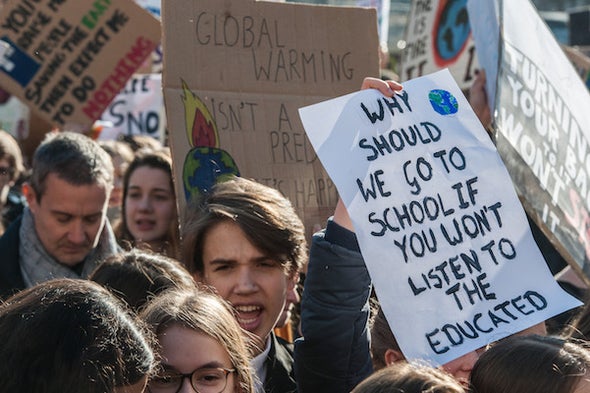
On August 29, Justin Trudeau visited a B.C. Hydro facility in Surrey to make a joint announcement with Premier John Horgan about electrification initiatives in the extraction, processing, and liquefaction of natural gas.JUSTIN TRUDEAU
In 2019, there has been a global uprising of youth concerned about climate change. Examples like Extinction Rebellion hosting die-ins, a nonviolent protest that brings attention to the unprecedented mass extinction with one million species facing extinction. And, Greta Thunberg raising her voice and leaving an impression on many of her peers.
Many may also be familiar with the IPCC report stating that there are 12 years left to act. Now one year later, there are 11 years to mobilize and make change. There is a unified voice calling urgently for change.
Most of the headlines from our neighbours to the south are disheartening, ranging from tragic mass shootings to the myriad of atrocious Trump stories. However, there are some positive newsworthy stories spattered throughout. Certain states are pulling ahead and leading the way in decarbonization and fighting the climate crisis. I have been repeatedly impressed with two states: Washington and California.
Washington
Washington’s Governor Jay Inslee has been paving the way and taking some serious climate action. The state is poised for carbon neutral electricity by 2030 and 100 percent clean energy by 2025. In March 2019, it went as far as banning hydraulic fracking for natural gas exploration.
California
California is another state that has been taking climate action in strides. It is host to many innovative renewable energy, clean tech and storage companies. For example, Tesla and its recently developed utility-scale storage solution Megapack. The City of Berkeley recently banned natural gas in new buildings, becoming the first city in North America to embrace this clear step toward building electrification.
B.C.’s successes in electrification?
In British Columbia, our electricity generation is relatively low-carbon. However, one-third of our energy consumption still relies on fossil fuels. We need to permeate our energy consumption with clean electricity and stop using fossil fuels for transportation, the built environment, and industrial processes. This idea was echoed in the province’s CleanBC plan, released in December 2018. MORE








